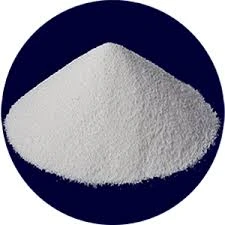- Afrikaans
- Albanian
- Amharic
- Arabic
- Armenian
- Azerbaijani
- Basque
- Belarusian
- Bengali
- Bosnian
- Bulgarian
- Catalan
- Cebuano
- Corsican
- Croatian
- Czech
- Danish
- Dutch
- English
- Esperanto
- Estonian
- Finnish
- French
- Frisian
- Galician
- Georgian
- German
- Greek
- Gujarati
- Haitian Creole
- hausa
- hawaiian
- Hebrew
- Hindi
- Miao
- Hungarian
- Icelandic
- igbo
- Indonesian
- irish
- Italian
- Japanese
- Javanese
- Kannada
- kazakh
- Khmer
- Rwandese
- Korean
- Kurdish
- Kyrgyz
- Lao
- Latin
- Latvian
- Lithuanian
- Luxembourgish
- Macedonian
- Malgashi
- Malay
- Malayalam
- Maltese
- Maori
- Marathi
- Mongolian
- Myanmar
- Nepali
- Norwegian
- Norwegian
- Occitan
- Pashto
- Persian
- Polish
- Portuguese
- Punjabi
- Romanian
- Russian
- Samoan
- Scottish Gaelic
- Serbian
- Sesotho
- Shona
- Sindhi
- Sinhala
- Slovak
- Slovenian
- Somali
- Spanish
- Sundanese
- Swahili
- Swedish
- Tagalog
- Tajik
- Tamil
- Tatar
- Telugu
- Thai
- Turkish
- Turkmen
- Ukrainian
- Urdu
- Uighur
- Uzbek
- Vietnamese
- Welsh
- Bantu
- Yiddish
- Yoruba
- Zulu
Dec . 07, 2024 10:48 Back to list
Guidelines for Ivermectin Injection Dosage in Swine Management and Care
Ivermectin Injection Dosage for Pigs A Comprehensive Guide
Ivermectin is a widely used antiparasitic medication that is effective against a variety of internal and external parasites in animals, including pigs. Understanding the proper dosage and administration methods of ivermectin for pigs is crucial for livestock producers to ensure the health and productivity of their herd. This article provides a detailed overview of ivermectin injection dosage for pigs, including indications, dosages, precautions, and administration techniques.
Indications for Ivermectin Use in Pigs
Ivermectin is primarily used for the treatment and prevention of parasitic infections in pigs. It is effective against a range of parasites, including
1. Gastrointestinal parasites Such as roundworms (Ascaris suum) and nodular worms (Oesophagostomum spp.). 2. Ectoparasites Including mites, lice, and ticks. 3. Other infections Such as some forms of mange and larvae of the screwworm.
Due to its broad-spectrum efficacy, ivermectin is often included in veterinary care protocols to maintain pig health, especially in production settings where the risk of parasitic infestations is higher.
Dosage Guidelines
The recommended dosage of ivermectin for pigs varies depending on the formulation and specific needs of the herd. Generally, the dosage for injectable ivermectin is as follows
- For pigs The typical dose of ivermectin injection is 0.2 mg/kg of body weight. This means that a 100 kg pig would receive 20 mg of ivermectin.
Administration Techniques
Ivermectin can be administered via various routes, but the injectable form is commonly used for ease of delivery and effectiveness. Here are the main steps for proper administration
ivermectin injection dosage for pigs

1. Preparation Ensure that the injection site and equipment are clean. Gather all necessary supplies, including a sterile syringe and needle suitable for the size of the pig.
2. Injection Site The recommended site for intramuscular injection in pigs is the neck region. This area is less likely to be affected by muscle damage from movement and provides a good absorption rate.
3. Injection Administer the ivermectin injection slowly and steadily to avoid causing distress to the animal. Maintain aseptic technique throughout the process to reduce the risk of infection.
Safety and Precautions
While ivermectin is generally safe for use in pigs, some precautions should be observed
1. Withdrawal Period Livestock producers must be aware of the withdrawal period associated with ivermectin use. The typical withdrawal time is approximately 28 days before slaughter to ensure that residues do not exceed safe levels.
2. Overdosage Care should be taken to avoid overdosing, as this can lead to adverse effects. Always calculate the appropriate dosage based on the animal’s weight, and consider consulting a veterinarian if there are any doubts.
3. Shellfish Sensitivity Animals should not be treated with ivermectin if they are known to be sensitive or allergic to the drug. Regular health assessments and keeping good medical records can aid in avoiding such complications.
Conclusion
Ivermectin is an invaluable tool in the fight against parasitic infections in pigs. Proper dosage, administration, and adherence to safety protocols are essential for maximizing the benefits of this medication while minimizing risks. As always, consultation with a veterinarian is recommended to tailor treatment plans to specific herd needs and to ensure overall health and well-being in pigs. With appropriate use, ivermectin can significantly contribute to maintaining a healthy and productive livestock operation.
-
Guide to Oxytetracycline Injection
NewsMar.27,2025
-
Guide to Colistin Sulphate
NewsMar.27,2025
-
Gentamicin Sulfate: Uses, Price, And Key Information
NewsMar.27,2025
-
Enrofloxacin Injection: Uses, Price, And Supplier Information
NewsMar.27,2025
-
Dexamethasone Sodium Phosphate Injection: Uses, Price, And Key Information
NewsMar.27,2025
-
Albendazole Tablet: Uses, Dosage, Cost, And Key Information
NewsMar.27,2025













